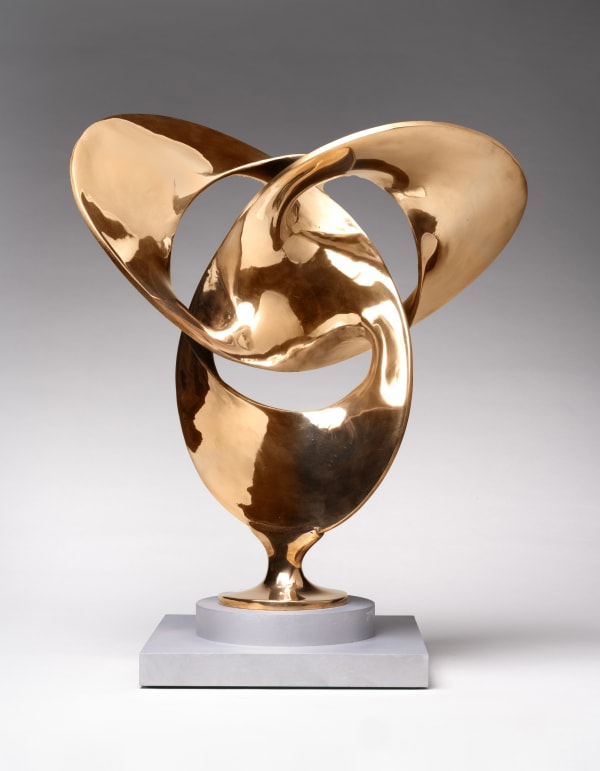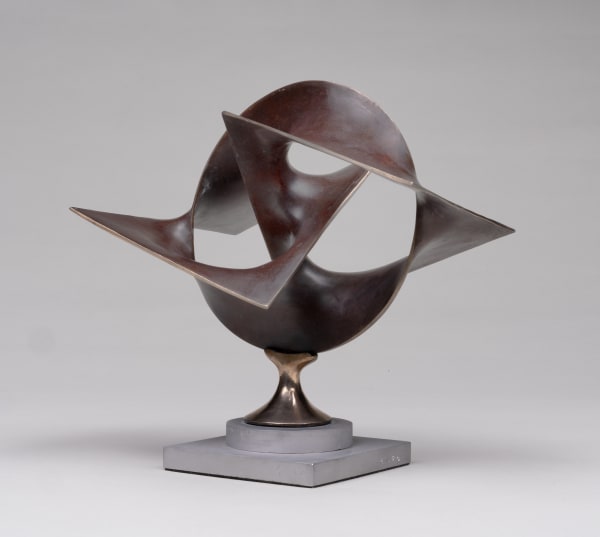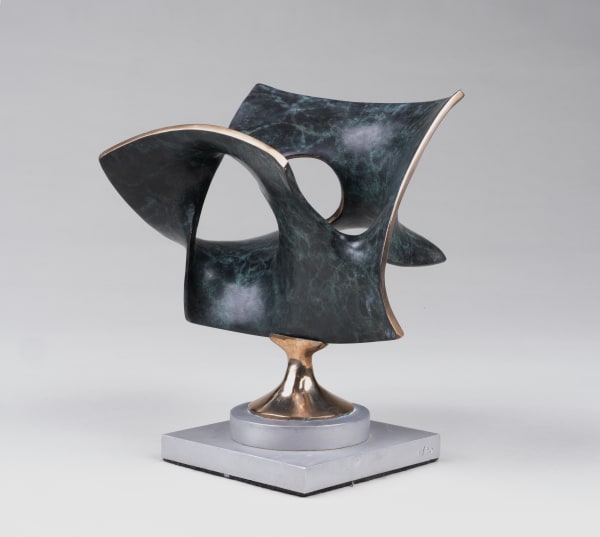Robert Engman 1929-2018
A sculpture answers one question and then asks the next question.
- Robert Engman
Born in Massachusetts to Swedish immigrants, Robert M. Engman (1927-2018) was an American sculptor who worked primarily with metal. He earned degrees from the Rhode Island School of Design and Yale University’s School of Art. A student of educator and painter Josef Albers and sculptor José de Rivera, he first pursued painting before developing his signature style of structural sculpture in 1955. While at Yale, he became a frequent figure in the New York City art gallery scene from 1956 to 1978. During this time, he received Yale’s John Boit Morse Memorial Traveling Fellowship, which allowed him two years to live and work in Florence, Italy.
Engman’s body of work shows a fascination with warped surfaces, exploring minimal surfaces to generate sculptural forms and often treating them with lens-like polished finishes. Much of his life was spent as an arts educator: in 1955 he became the head of the Sculpture department at Yale, and then moved to found the sculpture department at the University of Pennsylvania in 1964. While at Penn, he served as co-Chair of the Fine Arts department from 1965 to 1983, and then as Chair of the Graduate Studies program in Sculpture until his retirement in 1992. Engman’s most famous pieces include Triune (1975), a twenty-six-foot tall, fifteen-ton sculpture that still stands at the southwest corner of City Hall Plaza in downtown Philadelphia, and his sculpture honoring famed Indian yoga teacher and friend B.K.S Iyengar, After Iyengar (1978).
His work can be found in the permanent collections of the Hirshhorn Museum, the Michener Art Museum, MOMA, the Whitney Museum of American Art, numerous college museums, in the Morris Arboretum, and in private collections.
© Nancy Porter and Rachel Ruisard











